Matcha Facts
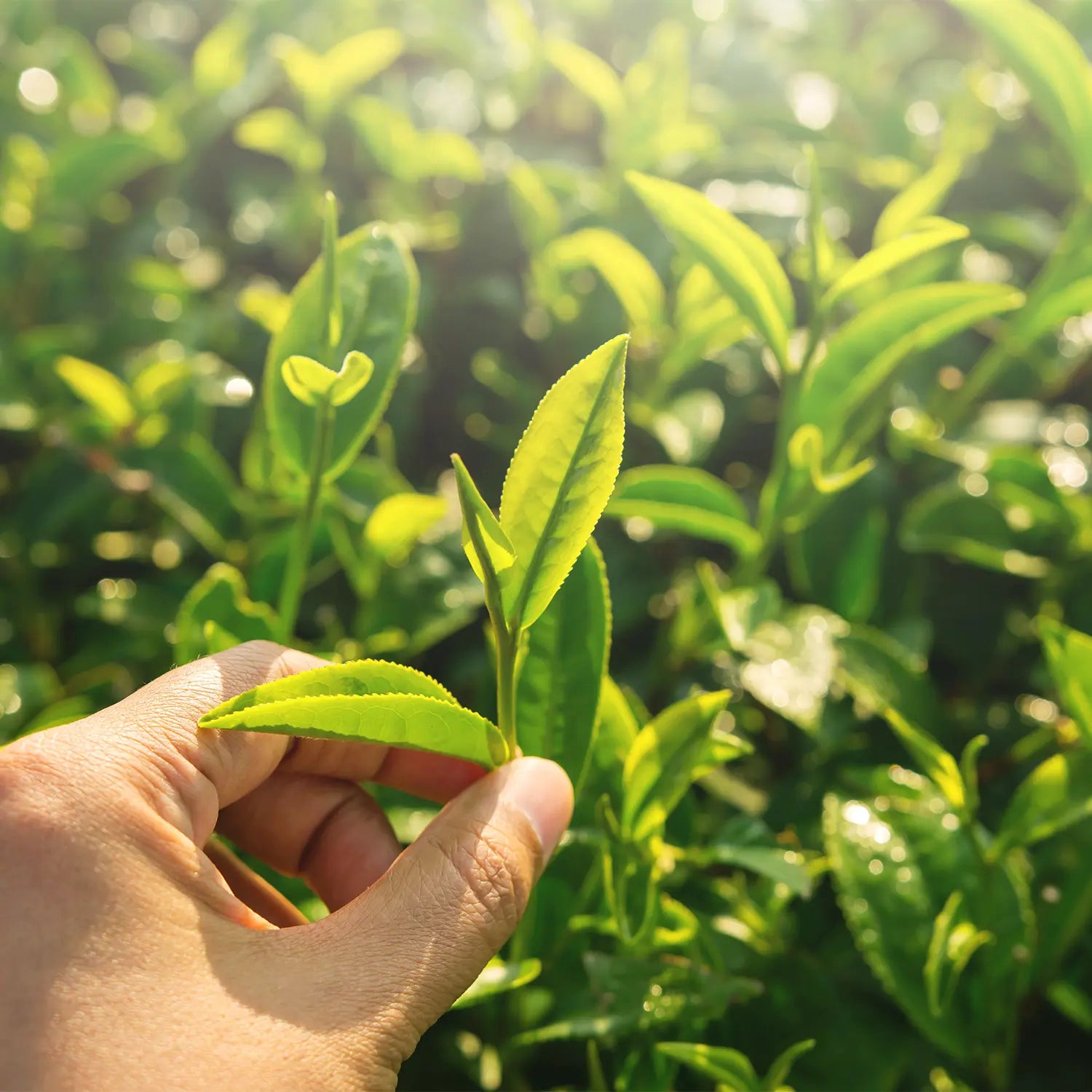
The green gold
Matcha is considered the finest and rarest tea variety in Japan. It is rich in many valuable nutrients. Over 800 years ago, this tea originated as a meditation drink for Buddhist monks. Today, matcha has arrived in European cafés as a trendy, super-healthy beverage.
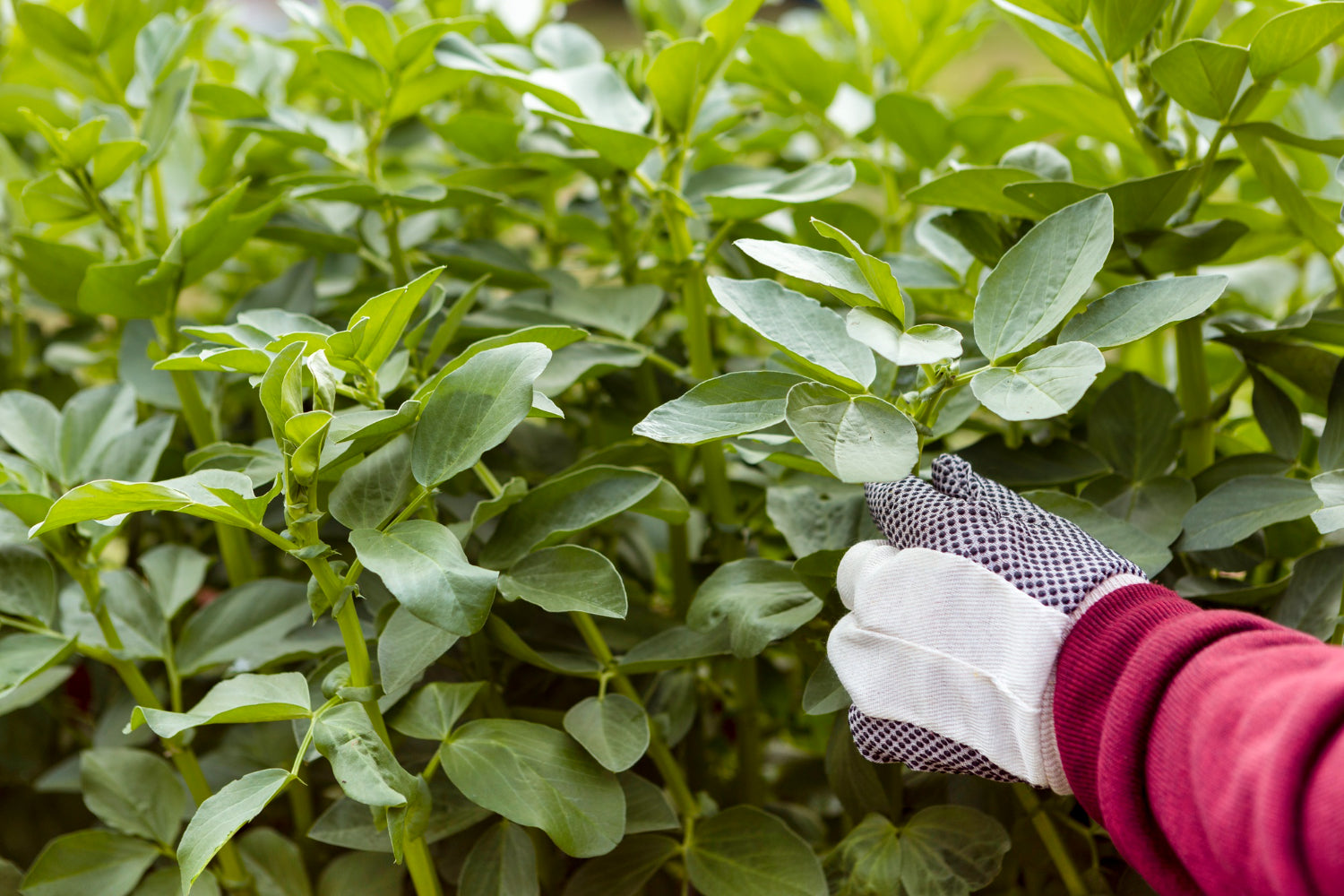
Production
Matcha is finely powdered green tea made from high-quality "Tencha" leaves. The long shading process before harvesting creates valuable amino acids, including L-theanine. These amino acids have a calming effect and give the stimulating character of the tea's caffeine a gentle touch.
By depriving the plants of light before harvesting, they also produce more chlorophyll and amino acids, which give matcha its pleasant sweetness.
After harvesting, the leaves are gently dried and then slowly ground into a fine matcha powder in traditionally polished granite stone mills without heat. This ensures that the matcha retains its valuable nutrients and is always consumed as a whole tea leaf in powder form.
This ensures that all the ingredients contained in the tea leaf are absorbed by the body. This makes the crucial difference in its effect compared to other types of tea.
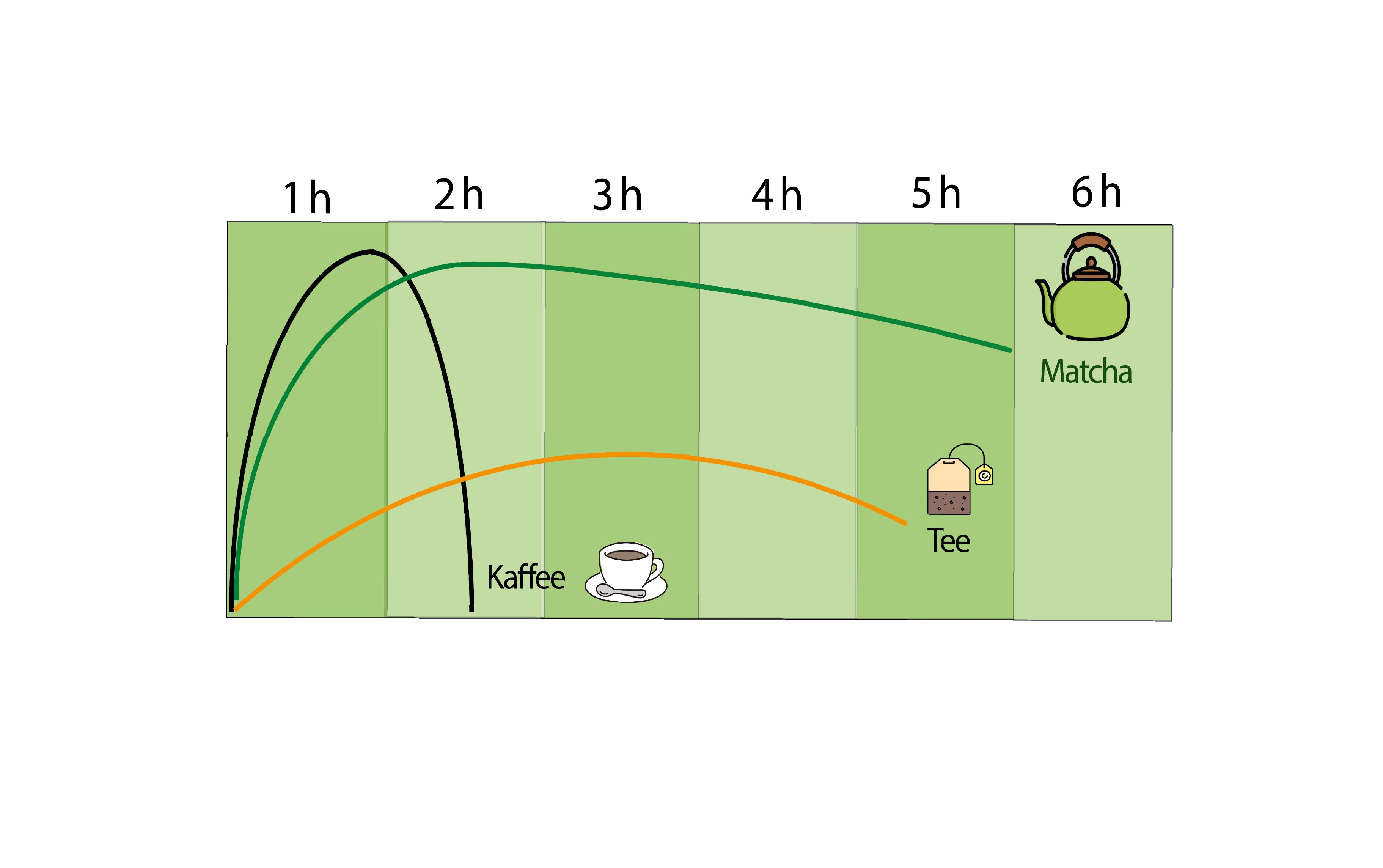
Effect
The amino acid L-theanine harmonizes perfectly with caffeine: with its calming properties, it softens the stimulating effect of caffeine, thus ensuring that the energy boost is gentler.
The result: a clear, alert mind and better concentration for many hours thanks to the perfect balance of invigoration and relaxation.
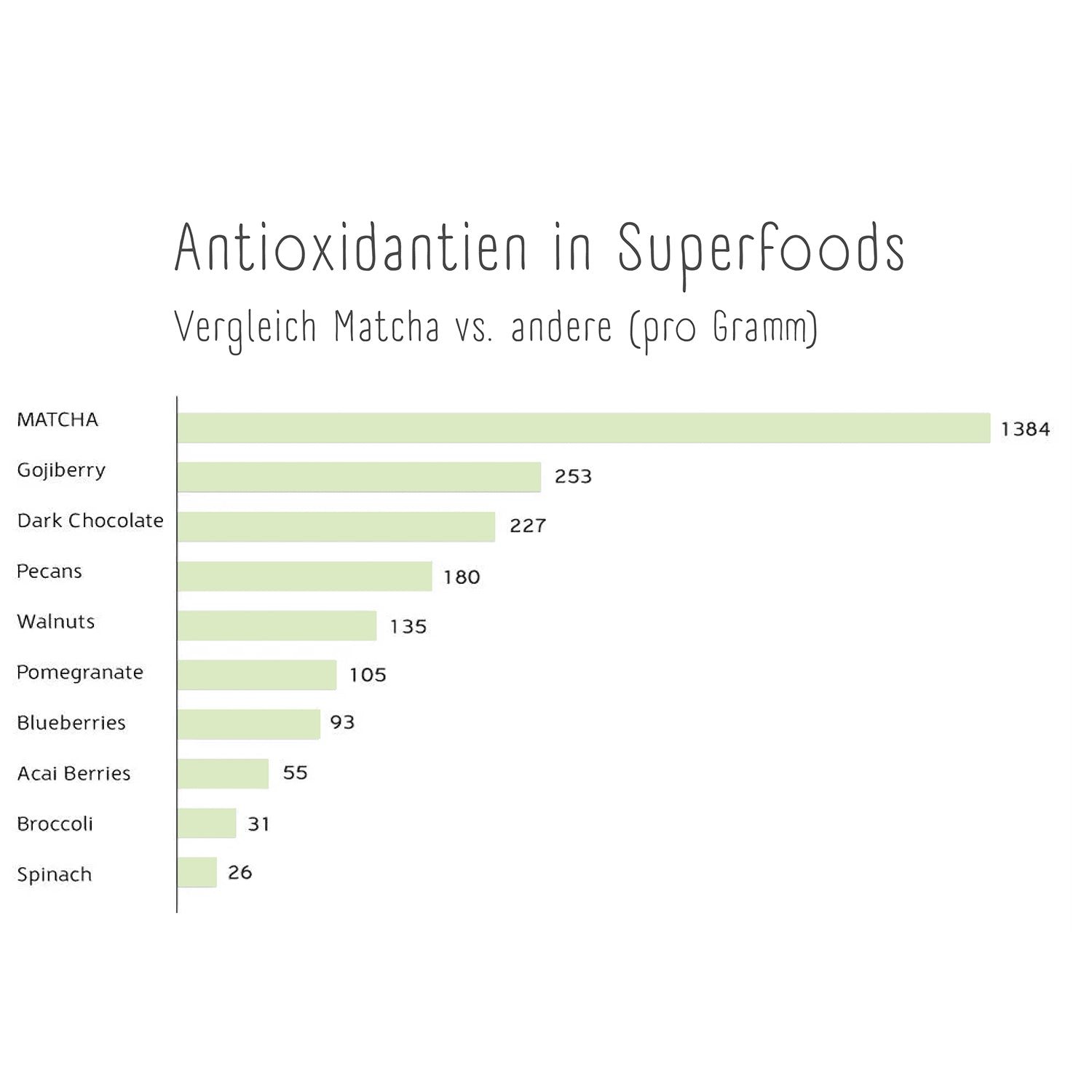
Superfood matcha
Matcha is also packed with vitamins and minerals such as vitamins C and E, and calcium. But above all, the amino acid L-theanine and antioxidants like epigallocatechin gallate make matcha a superfood.
Matcha has the highest known value of cell-protecting antioxidants in a natural product, making it a true fountain of youth and a star among superfoods.
The antioxidant capacity of matcha tea, for example, far exceeds that of superfoods such as goji berries, pomegranates, or blueberries.
This ability is measured using the ORAC value (Oxygen Radical Absorbing Capacity). With an ORAC value of over 1,300 units per gram, matcha is a natural wonder weapon against free radicals and the undisputed top performer among all "superfoods"!
Similar-looking “copies” such as ground green tea powder have hardly any noticeable effects and do not come close to having the extensive profile of ingredients like the original.
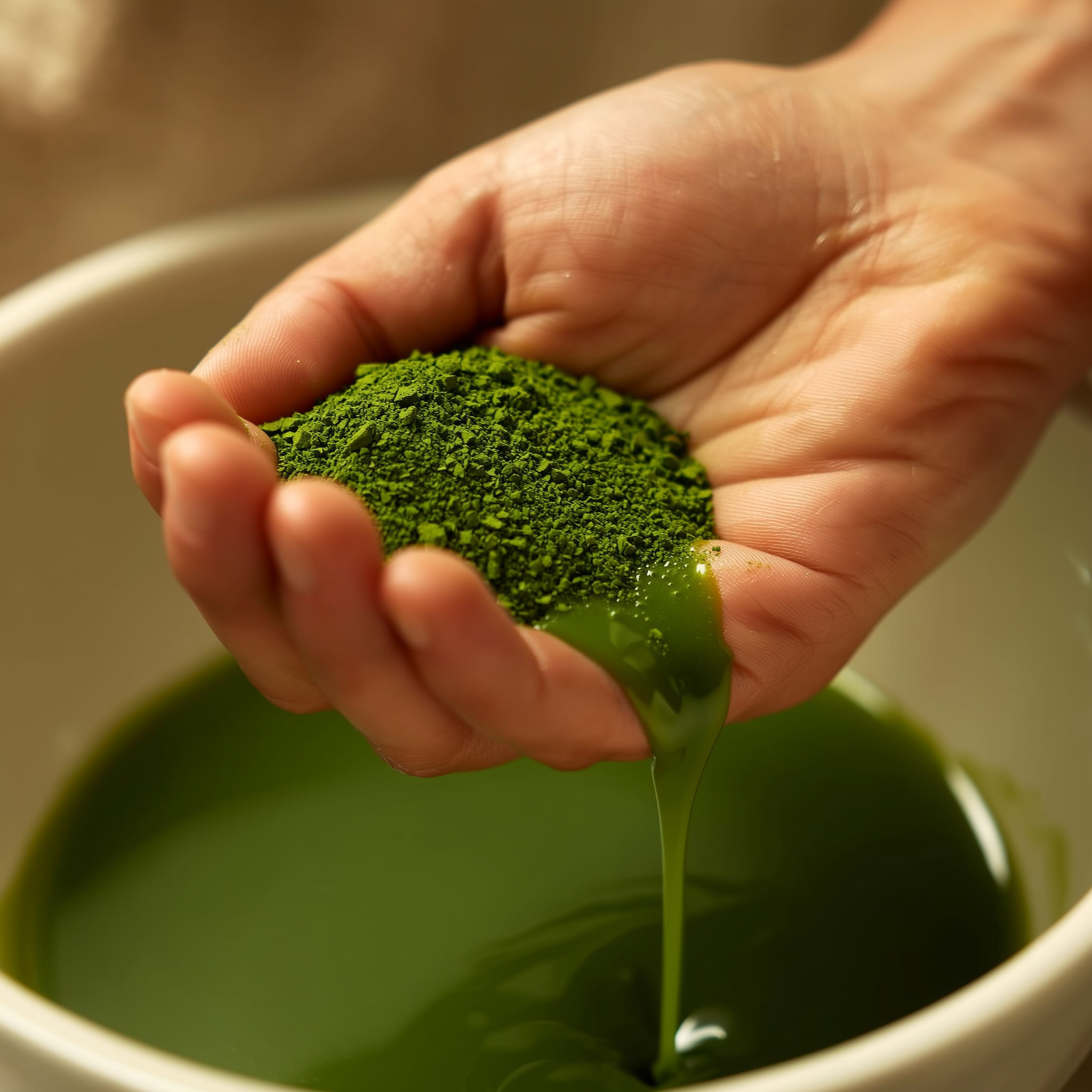
Product safety
Our main raw material is premium matcha powder from certified cultivation and comes from the well-known matcha growing regions of Uji (Kyoto Prefecture) and Kagoshima (Kyushu Prefecture).
Our supplier conducts quality checks at very short intervals, the results of which are always available for review. This ensures that the matcha tea in our products is free of contaminants.
